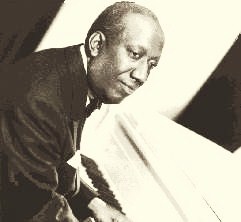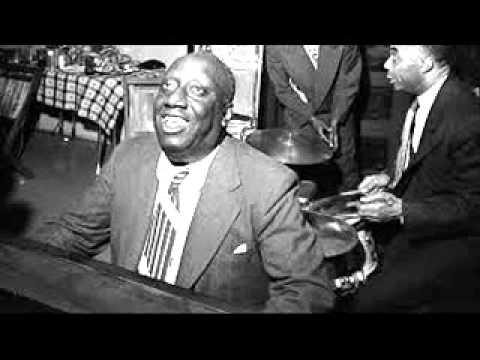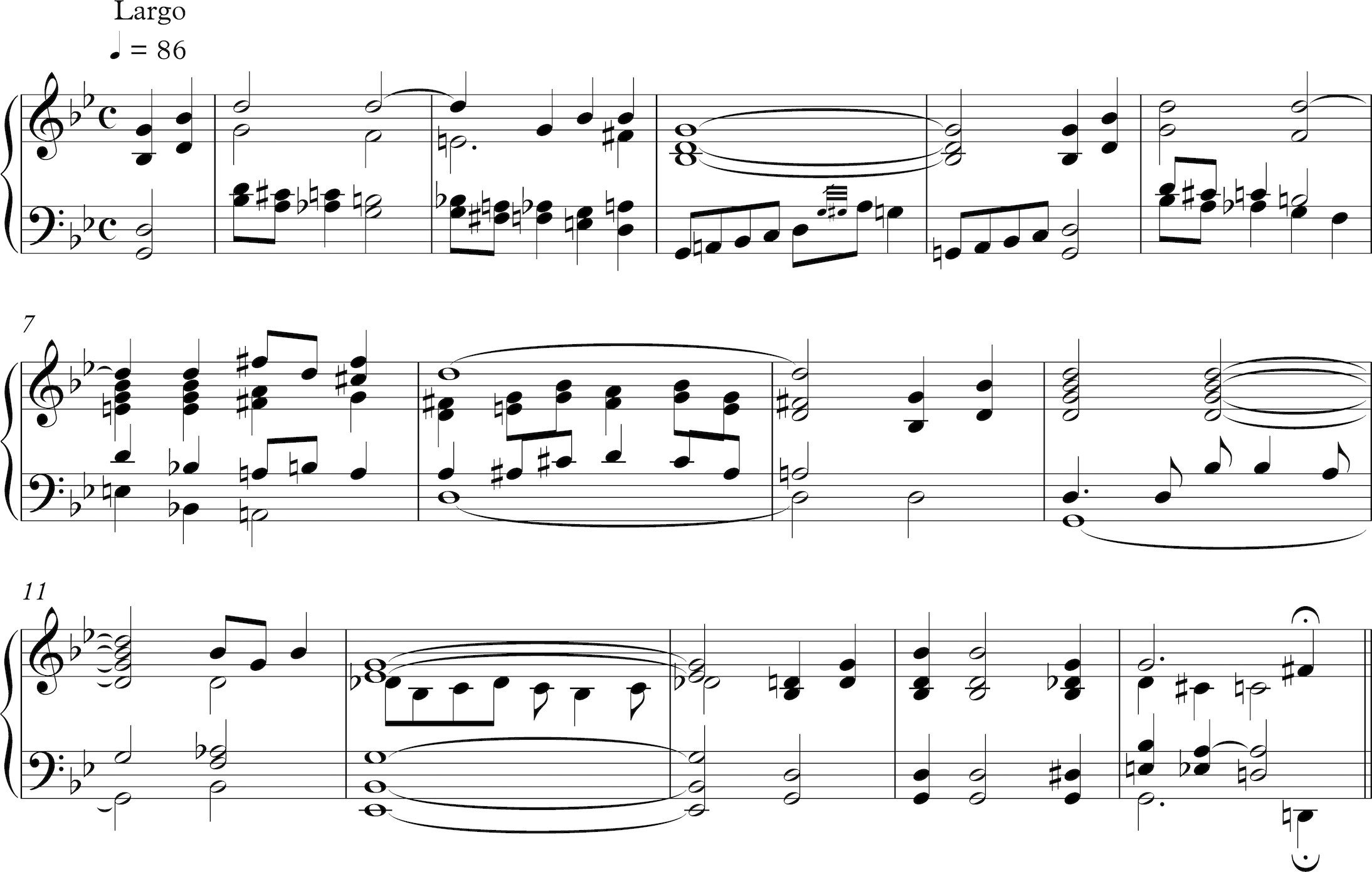James P. Johnson: Harlem Symphony (1932) – Fourth movement: Baptist Mission – An Analysis by Kyle Gann
Comments Off on James P. Johnson: Harlem Symphony (1932) – Fourth movement: Baptist Mission – An Analysis by Kyle GannAugust 16, 2019 by Admin

James P. Johnson: Harlem Symphony (1932) – Fourth movement: Baptist Mission
Analysis by Kyle Gann
All score reductions by the author. Read an analysis of the Symphony’s first movement at http://www.soundwordsight.com/2019/07/james-p-johnson-harlem-symphony-1932-first-movement-penn-station-subway-ride-an-analysis-by-kyle-gann/, the second movement at http://www.soundwordsight.com/2019/08/james-p-johnson-harlem-symphony-1932-second-movement-song-of-harlem-april-in-harlem-an-analysis-by-kyle-gann/and the third movement at http://www.soundwordsight.com/2019/08/james-p-johnson-harlem-symphony-1932-third-movement-the-night-club-an-analysis-by-kyle-gann/.

Fourth Movement: Baptist Mission
Theme mm. 1-15
Var. I Allegro moderato mm. 16-35
Var. II mm. 36-51
Var. III mm. 52-67
Var. IV mm. 68-83
Var. V mm. 84-99
The Prayer – Var. VI mm. 100-127
Var. VII mm. 128-143
Finale mm. 144-157
Allegro mm. 158-177
The fourth movement, Baptist Mission, is a theme and variations on a characteristic blues hymn. From the facts that it remains in G minor until almost the end, the theme is actually little varied, and that differences among the early variations are mostly decorative, one could conclude that it is a superficial example of the genre, but this is far from the case. As in a fervent revival meeting, the relative constraint of the first five variations allows a tremendous emotional momentum to build gradually, and after a momentary pause for prayer in Variation VI, the breaking loose in the denouement is all the more exciting in contrast to the first half’s relative restraint. This is not a conventional theme and variations, but one that uses the repetitive variation form to build an effective dramatic trajectory.
The theme is introduced at a languid largo tempo, with some of the lushest chromatic harmonization of the entire work.

From here on the tempo quickens considerably for most of the rest of the movement, introducing a bass ostinato that will run through the first five variations.

Variation I (mm. 16-35) simply states the hymn in a solo horn with a simplified string accompaniment.
Variation II (mm. 36-51) puts the theme back in the strings, enlivened by periodic figures in the oboes.

Variation III (mm. 52-67) has the theme in the trumpet, while a clarinet plays a countermelody with a jazzy flat fifth (Db). The ostinato is taken over, with similarly bluesy harmonies, by the entire string section.
Variation IV (mm. 68-83) returns the theme to the strings a bassoon and trombone, with rippling arpeggios in chords in the flutes and clarinets.
Variation V (mm. 84-99), upping the energy level, has the theme in the oboes, accompanied by the strings and lower brass in jazz chords. The three trumpets punctuate it with syncopated figures.

Variation VI (mm. 100-127) is labeled “The Prayer,” and takes the tempo down considerably. A dotted bluesy figure moves from the bassoon to the clarinet to the trumpet, as though different voices in the congregation are calling out.

The theme and ostinato start up again in m. 113, played by the winds and brasses.
Variation VII (mm. 128-143) picks up the tempo to a quick two-step, and a note in the score indicates this brief variation is to be repeated, as though this were an afterthought. The trombone plays the theme as the strings sweep downward over and over through the ostinato. The focus, though, is a bluesy figure in the trumpets.

At m. 144 the Finale begins. A quick introduction goes through V/ii and V/VII chords to Bb, the second time turning to a German sixth and landing on a dominant. The entire movement has been in G minor, but at m. 158 the theme starts up and modulates, going into a Bb dominant and stating part of the theme in Eb minor. It makes its way to Bb minor, and them moves chromatically to a D dominant at m. 170. The final seven measures precipitously reinstate G minor over a chromatic bass line, and rise to a triumphant final chord with a Picardy third.
Hear the Harlem Symphony below
With a special thank you to The Institute of Jazz Studies at Rutger University.
 Kyle Gann (b. 1955 in Dallas, Texas) is a composer and was new-music critic for the Village Voice from 1986 to 2005. Since 1997 he has taught at Bard College. He is the author of seven books on American music, including books on Conlon Nancarrow, Robert Ashley, John Cage’s 4’33”, and Charles Ives’s Concord Sonata. He studied composition with Ben Johnston, Morton Feldman, and Peter Gena, and much of his music is microtonal. His major works include the piano concerto Sunken City, Transcendental Sonnets for chorus and orchestra, the microtonal music theater piece Custer and Sitting Bull and The Planets for mixed octet. Visit him at http://www.kylegann.com/.
Kyle Gann (b. 1955 in Dallas, Texas) is a composer and was new-music critic for the Village Voice from 1986 to 2005. Since 1997 he has taught at Bard College. He is the author of seven books on American music, including books on Conlon Nancarrow, Robert Ashley, John Cage’s 4’33”, and Charles Ives’s Concord Sonata. He studied composition with Ben Johnston, Morton Feldman, and Peter Gena, and much of his music is microtonal. His major works include the piano concerto Sunken City, Transcendental Sonnets for chorus and orchestra, the microtonal music theater piece Custer and Sitting Bull and The Planets for mixed octet. Visit him at http://www.kylegann.com/.Comments Off on James P. Johnson: Harlem Symphony (1932) – Fourth movement: Baptist Mission – An Analysis by Kyle Gann
Sorry, comments are closed.

